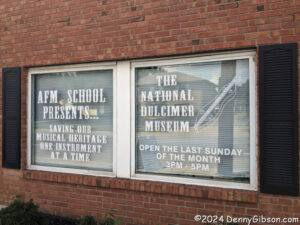 A couple of weeks ago, I didn’t even know that a dulcimer museum existed let alone that it was within a dozen miles of my home. On the last Sunday of August, I visited the American Folk Music School/The National Dulcimer Museum and learned that the museum has been in operation for about two years and that the school it shares space with has been there for about five years.
A couple of weeks ago, I didn’t even know that a dulcimer museum existed let alone that it was within a dozen miles of my home. On the last Sunday of August, I visited the American Folk Music School/The National Dulcimer Museum and learned that the museum has been in operation for about two years and that the school it shares space with has been there for about five years.
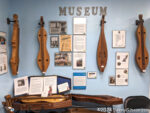 US-42 (a.k.a., Reading Road) splits into separate north and southbound sections in Sharonville, OH, where the museum is located. The windows in the opening photo face the northbound lanes. The entrance and a parking lot are at the rear of the building. When I entered, Vickey Sasser, the knowledgeable and energetic lady behind the operation, had just started a museum tour with a group of people who knew much more about dulcimers than I did. Some were wearing shirts with the logos of assorted area dulcimer clubs and Vickie knew several by name.
US-42 (a.k.a., Reading Road) splits into separate north and southbound sections in Sharonville, OH, where the museum is located. The windows in the opening photo face the northbound lanes. The entrance and a parking lot are at the rear of the building. When I entered, Vickey Sasser, the knowledgeable and energetic lady behind the operation, had just started a museum tour with a group of people who knew much more about dulcimers than I did. Some were wearing shirts with the logos of assorted area dulcimer clubs and Vickie knew several by name.
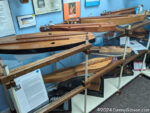
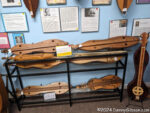
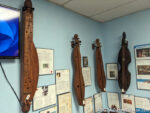 There are, of course, factory-made dulcimers but most of the more interesting ones, which means most of those in the museum, are made by individuals. The wide variations in design, materials, and craftsmanship are part of what makes them interesting.
There are, of course, factory-made dulcimers but most of the more interesting ones, which means most of those in the museum, are made by individuals. The wide variations in design, materials, and craftsmanship are part of what makes them interesting.
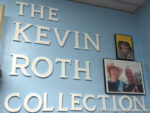
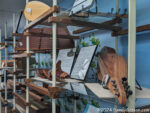
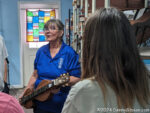 Some well-known builders or performers have multiple instruments in the museum. By far the largest collection of this sort is associated with performer Kevin Roth. That’s Vickey Sasser in the third picture holding a dulcimer that, if I understood her correctly, Kevin had made specifically for a single performance of the national anthem at the 2016 Democratic National Convention.
Some well-known builders or performers have multiple instruments in the museum. By far the largest collection of this sort is associated with performer Kevin Roth. That’s Vickey Sasser in the third picture holding a dulcimer that, if I understood her correctly, Kevin had made specifically for a single performance of the national anthem at the 2016 Democratic National Convention.
 The museum is preparing a space for a collection of instruments from performer Bing Futch. Bing has performed and conducted workshops at the museum in the past and will be doing both again next June. Available right now is his video of a recent visit to the museum in which he and Vickie provide a much better overview than my few photos and uninformed commentary.
The museum is preparing a space for a collection of instruments from performer Bing Futch. Bing has performed and conducted workshops at the museum in the past and will be doing both again next June. Available right now is his video of a recent visit to the museum in which he and Vickie provide a much better overview than my few photos and uninformed commentary.
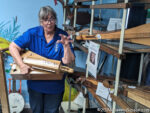 Although the bulk of the instruments displayed at the museum are mountain dulcimers, there are others including hammer dulcimers, autoharps, and flutes. Here Vickey is holding a hurdy-gurdy that I believe was made specifically for the museum. I have seen a few hurdy-gurdys in the past so already had some of my early misconceptions corrected but this one is small and simple and even opens for an up-close view of the internal workings. I think I finally understand how these things work.
Although the bulk of the instruments displayed at the museum are mountain dulcimers, there are others including hammer dulcimers, autoharps, and flutes. Here Vickey is holding a hurdy-gurdy that I believe was made specifically for the museum. I have seen a few hurdy-gurdys in the past so already had some of my early misconceptions corrected but this one is small and simple and even opens for an up-close view of the internal workings. I think I finally understand how these things work.
Being open just two hours a month is clearly not a lot. Plus, due to another commitment, Vickey will not be opening the museum for its “last Sunday” showing in September. On the other hand, she is often on-site giving lessons and such so, if the scheduled monthly window can’t be made to work for you, there’s a pretty good chance it could be arranged for her to let you in that back door at some other time.
